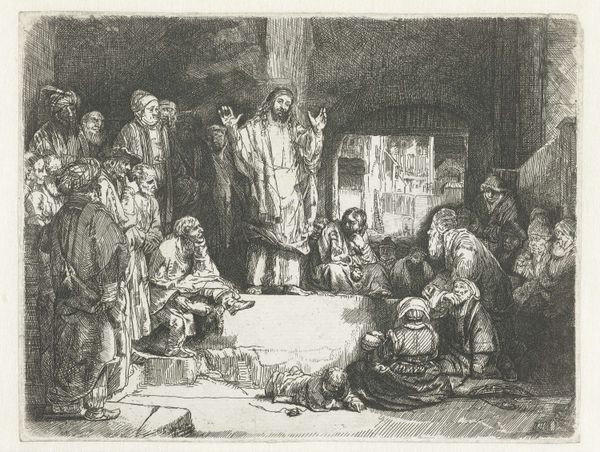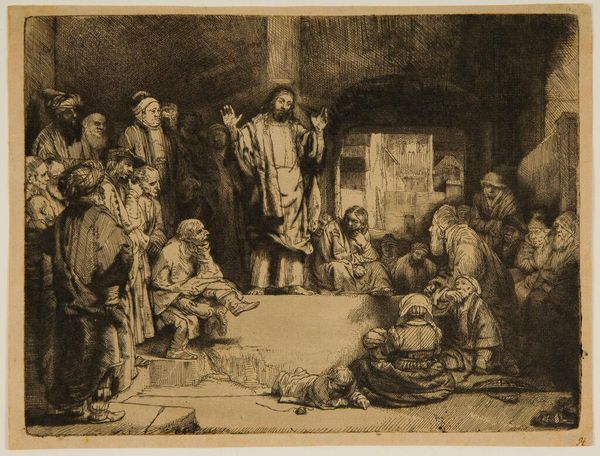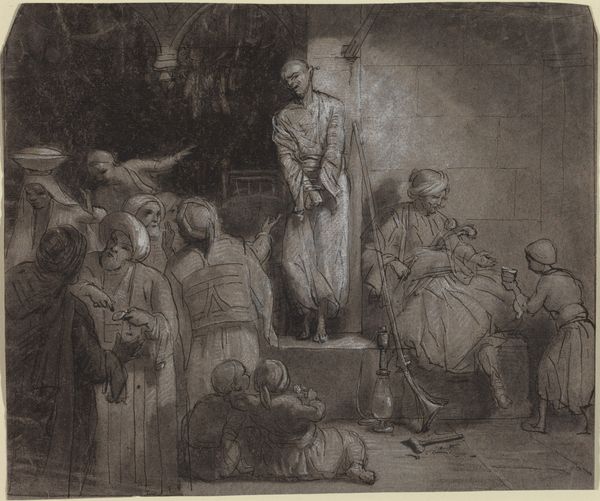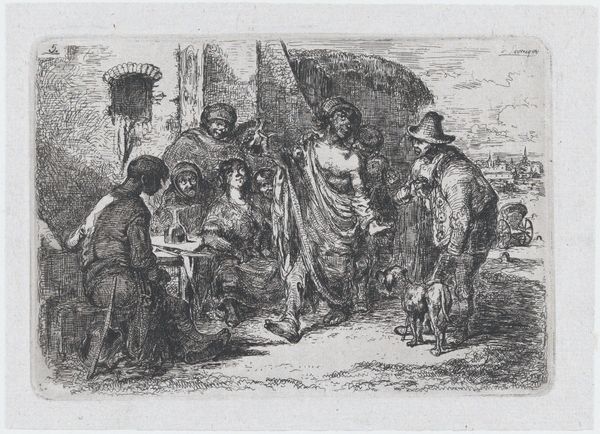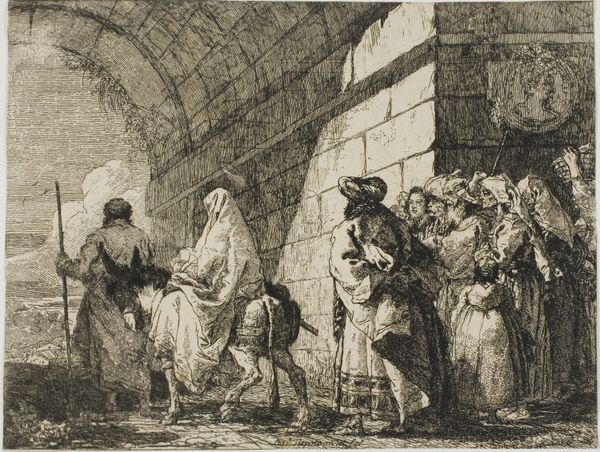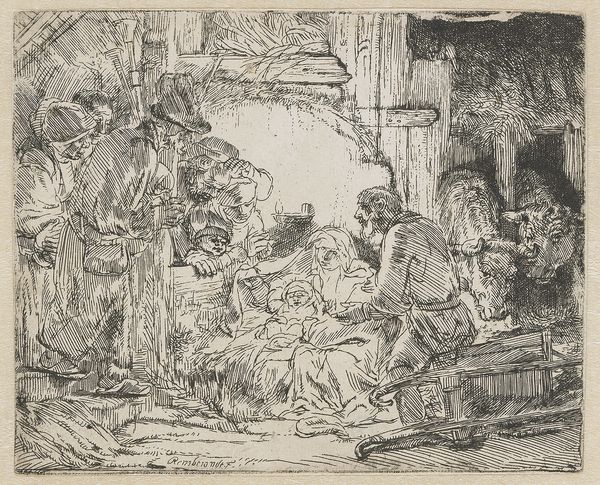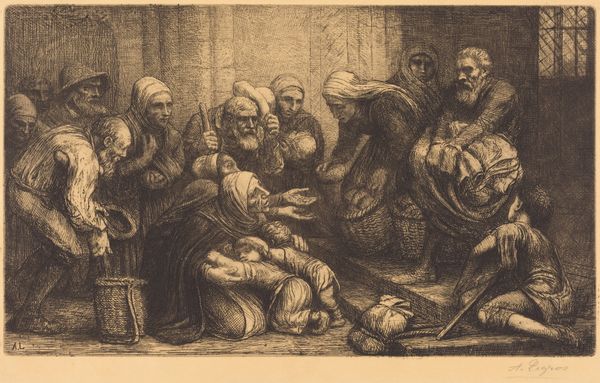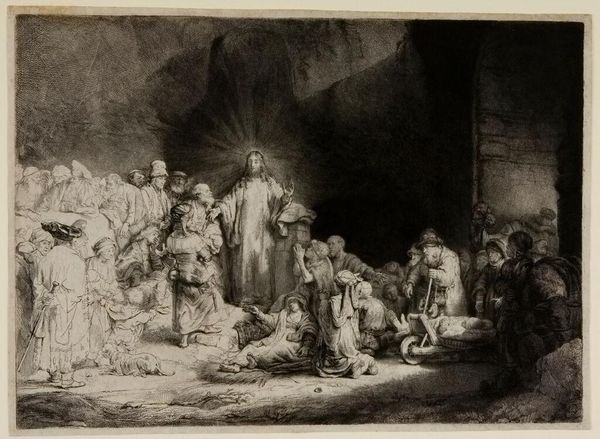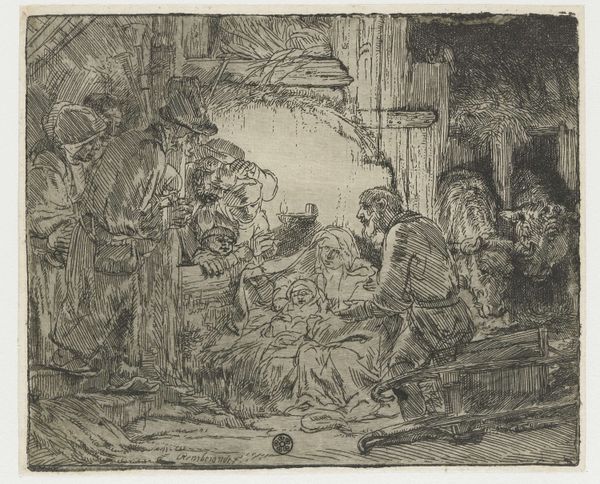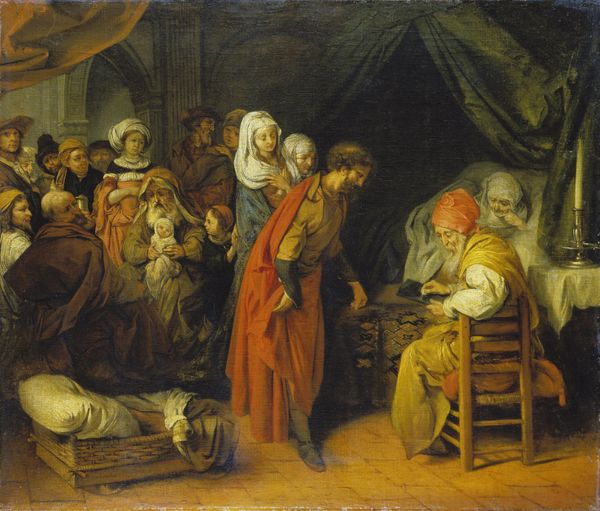
print, etching, drypoint
#
portrait
#
narrative-art
#
baroque
#
dutch-golden-age
# print
#
etching
#
figuration
#
history-painting
#
drypoint
#
realism
Dimensions: 6 1/8 x 8 1/16 in. (15.6 x 20.5 cm) (sheet)
Copyright: Public Domain
Curator: Here we have Rembrandt van Rijn's etching and drypoint print, “Christ Preaching,” created around 1652, currently held here at the Minneapolis Institute of Art. Editor: Oh, there’s something so tender about it. Despite the somber tones, a gentle feeling radiates outward. I'm curious to know how a printed image achieves such warmth, especially given the subject matter. Curator: As a printmaker, Rembrandt could produce images on a comparatively larger scale than painting; printmaking enabled circulation, an active dissemination of ideas amongst the burghers of Amsterdam. I believe here, though, Rembrandt wants us to confront Christ’s humanity. Editor: Precisely! Look at how he renders the light—or lack thereof—creating these intensely focused areas that draw you into the individual faces in the crowd. Notice how all those folks listening aren’t idealized; they’re rough and worn, truly representing an ordinary crowd. It’s so wonderfully human, down to that tiny toddler fiddling with their feet right in front of Christ. Curator: Right, these are everyday folk; their faces tell stories. What strikes me, though, is that printmaking allows the work to have a different type of relationship to labor. Etching, drypoint—these are intensive, almost craft-like processes. He repeats it as he perfects and changes his printing plates; in so many states, his efforts result in subtle gradations of tone—almost akin to shadow. Editor: Absolutely! And it's the labor involved in the print-making process—scratching into the copper, layering the inks, each pull from the press that lends the final image its haunting weightiness. It’s as if each line carries the echo of Rembrandt’s hand. Did he make any preparatory sketches beforehand, I wonder? Curator: No matter; whether sketches or no, this image has the spontaneity of life! These people look alive and real, reacting with subtle, genuine human expression, drawn with purpose to deliver emotional narratives to those experiencing the piece. Editor: I like how you put it. To bring it full circle, I feel as if Rembrandt uses light, and this almost painful mark-making process to not only give weight to this scene from scripture, but makes me consider this work as an act of both faith and deep humanity. Curator: Yes, seeing this print makes you reflect; through material, scale and technique. These marks, repeated across printed pages, made Christ’s lessons, his labor of love, and perhaps even Rembrandt’s process a democratic one.
Comments
minneapolisinstituteofart almost 2 years ago
⋮
This print's nickname—rather than referring to a tomb, as was long thought—is derived from the name of the person who may have commissioned it, either Nicolaes or Pieter de la Tombe.
Join the conversation
Join millions of artists and users on Artera today and experience the ultimate creative platform.


